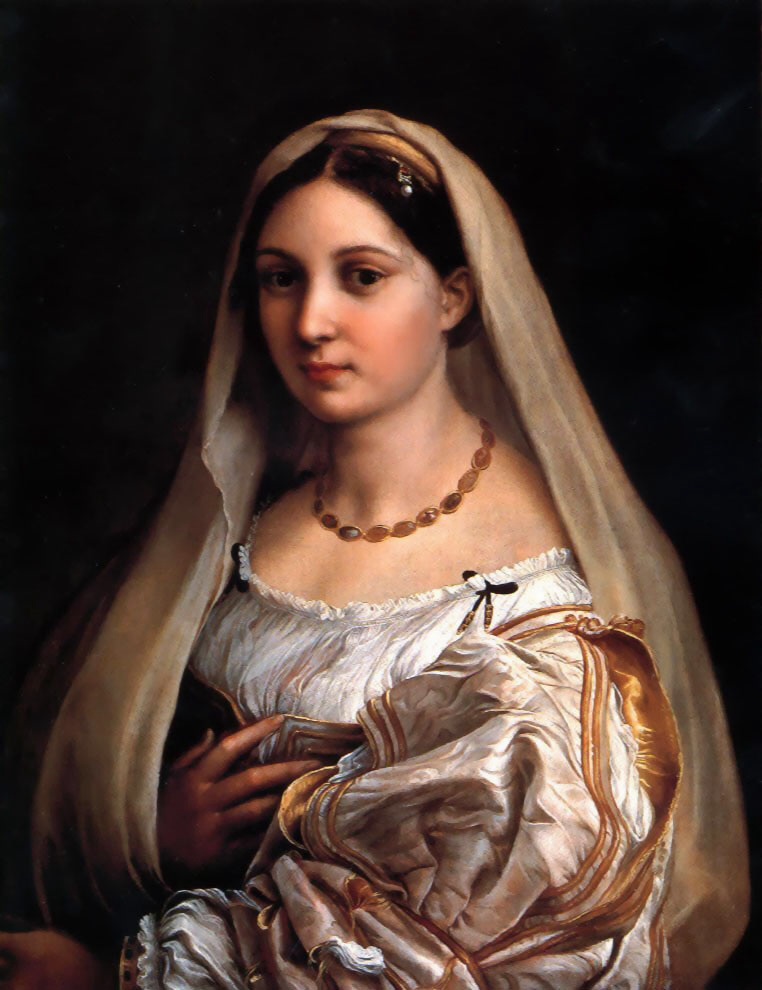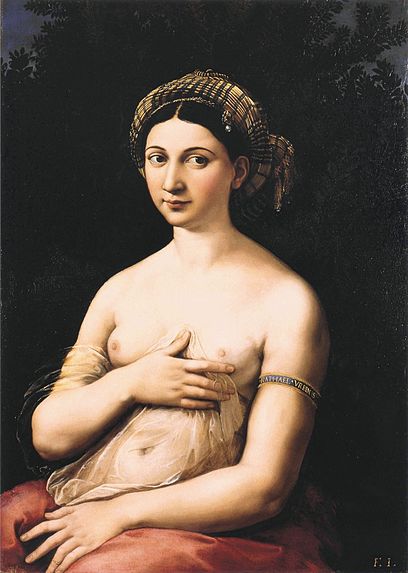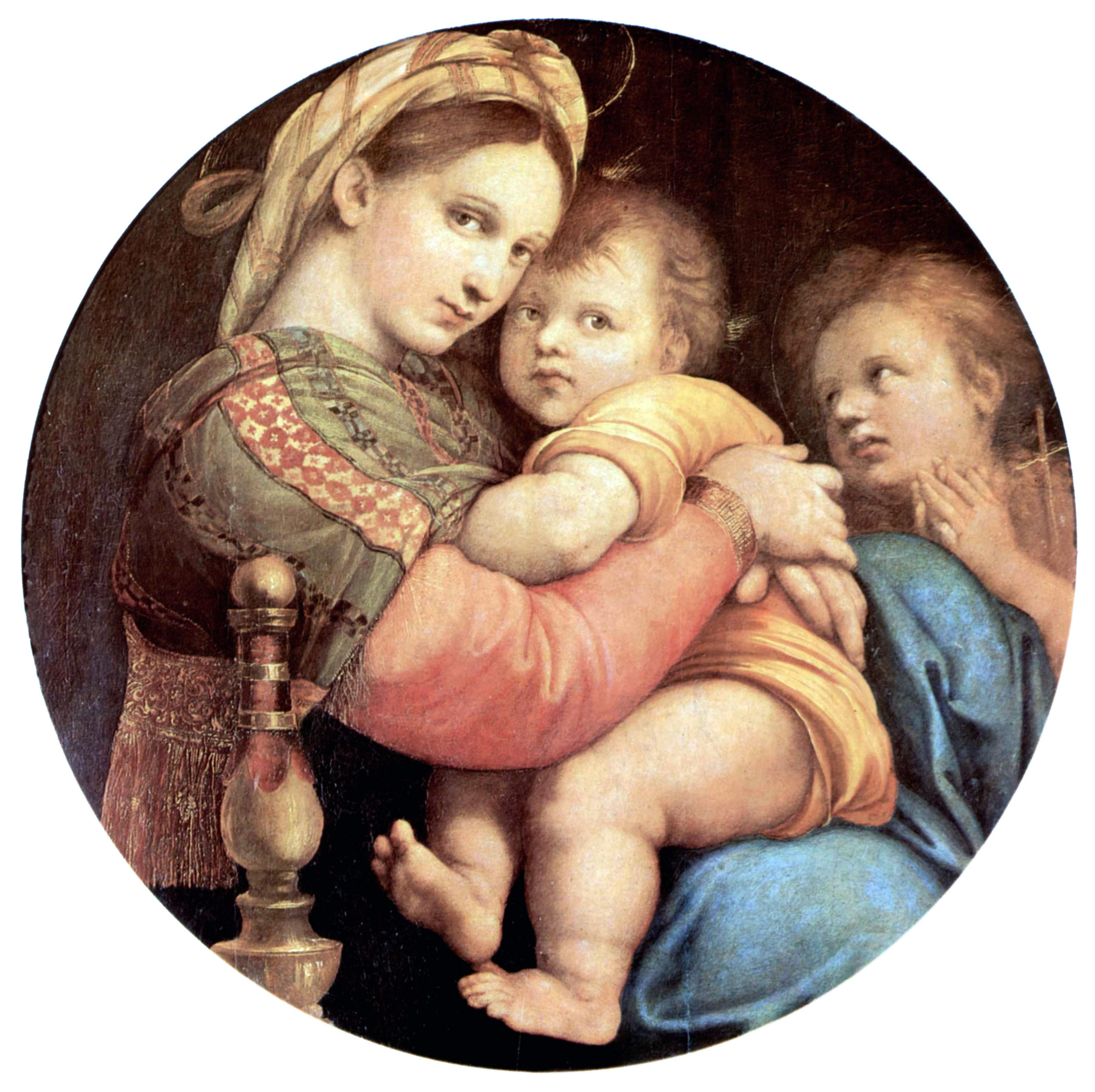On a recent trek to Milwaukee centered around the gloriously low art of an AC/DC concert (see my review here), I also stopped to take in the gloriously high art of Raphael's La Donna Velata (The Woman With The Veil), a visiting one-painting exhibition at the Milwaukee Art Museum.
I also had time to take in a very good photography exhibit called Street Seen (closing on Sunday), quickly browse the museum's solid permanent collection which I have seen many times (this is a fun favorite) and as always, just enjoy being within Santiago Calatrava's glorious museum addition.
But it was the chance to see just one Raphael painting--which I'd probably seen in 2002 at its home in the Palatine Gallery of Florence's spectacular Palazzo Pitti, but had long since forgotten--that inspired to spend $12 to enter the museum for only about 90 minutes before AC/DC shook me all night long.
Accompanied by some good background information, which said that La Donna Velata was once considered the most famous painting in the world, Raphael's masterpiece was remarkably resplendent--especially in the fine detailing of the woman's silken garb. I was, however, a bit perplexed about just how long I was supposed to look at this one painting, how closely, from how many angles, etc., and how I would know if I had noticed everything I was supposed to.
I mean, given that this one woman--said to be Raphael's mistress, Margherita Luti, who he depicted in another masterpiece, La Fornarina (the bakeress), pictured at right and which I had seen in its own one-painting exhibition in Indianapolis in 2005--had traveled over 4600 miles and nearly 500 years to get to Milwaukee, what was the proper amount of time and attention to allocate?
I probably spent about 30 minutes in total--not just in front of the picture, but also reading the wall text and watching a 12-minute video--but whatever time you may spend, a visit is probably well worth it.
Especially as there are very few paintings by Raphael--one of greatest of the greats; I consider him the Mozart of visual arts--in American museums (primarily just the National Gallery in Washington and the Metropolitan Museum of Art in New York).
And while it might not seem news--or even blog--worthy to write about the genius of Raphael, who has been considered as such since during his lifetime (1483-1520), I remember that when I went to Italy in 2002, already a rabid art lover (though primarily infatuated with Impressionism at that point, prior to the appreciation travels to Italy, Spain and Holland would greatly expand) and jonesing with anticipation to see Michaelangelo's Sistine Chapel ceiling, I really had no knowledge of who Raphael was when the Vatican tour guide stopped at the stupefyingly-spectacular Stanza della Segnatura prior to entering the Chapel. In fact, although instantly in awe, my greatest point of intrigue was that Raphael's School of Athens fresco, just below, was partially mimicked on Guns 'n' Roses' Use Your Illusion album covers.
I imagine my collegiate Art History course must have covered Raphael, but without any first-hand familiarity with his works, I really was clueless about him--who like a good handful of my favorite artists (Seurat, Van Gogh, Caravaggio, Modigliani) died before age 40--until I was well into my 30s.
So don't feel too silly if you love art but are largely oblivious about Raphael, although he is certainly an artist you should know. As a public service, I will conclude with a good smattering of some of my favorite works by a master whose unveiled genius endures, and until June 6 can be seen--through one beautiful portrait--in Milwaukee.
St. Catherine of Alexandria, 1507
National Gallery of Art, London
Self-Portrait, 1504-06
Uffizi Gallery, Florence, Italy
Portrait of Agnolo Doni, 1505-07
Palatine Gallery, Pitti Palace
Florence, Italy
Madonna della sedia, 1513-14
Palatine Gallery, Pitti Palace
Florence, Italy
Portrait of Pope Julius II, 1511
National Gallery, London
Portrait of Baldassare Castiglione, 1514-15
Louvre, Paris, France
The Sistine Madonna, 1512-14
Gemäldegalerie Alte Meister, Dresden, Germany
You can find many more Raphael works online through Wikipedia or Olga's Gallery. I'll conclude with one more fresco from the Vatican stanzas, titled The Parnassus (1511)












This was a wonderful piece about Raphael. It brings up great memories of my days in grad school at Ohio State when I was in the art history dept. Art history gave me a terrific grounding in how to analyze/interpret images with a balance of objectivity and opinion. It also drummed into me the importance of historical context. This has served me well as a film historian.
ReplyDelete